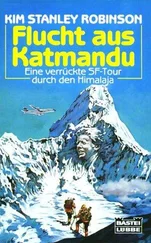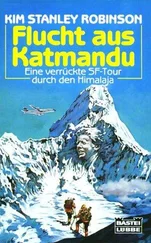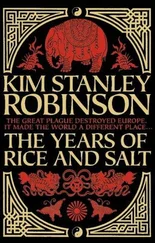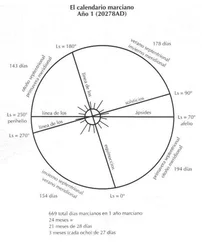But?
“You would need a big honking booster to lift all that hardware into space,” the chief scientist said. Maybe something that had horizontal takeoffs and landings both, some kind of ramjet thing. In any case a major new booster, like the old Saturn rocket, so foolishly canceled at the end of Apollo, but modernized by all that a half-century’s improvements in materials and design could give it. A good booster could make the shuttle look like the weird and dangerous contraption it had always been.
“Much progress on that, then?” Frank asked.
The matter had been studied, and some starts made, but it could not be said to be going full speed yet. Even though it was a crucial part of a full clean energy solution.
“What have people been thinking this last decade or two?” Frank wondered once. “Why not do the obvious things?”
The chief scientist shrugged; a rhetorical question, obviously. Only Edgardo would bother to shout out Because we are stupid!
Frank said, “Could the Air Force itself commission a big booster, as a defense priority?”
“Well, it’s supposed to be NASA’s thing. And there’s lots of people nervous about what they call militarizing space.”
“Can NASA do it?”
Another shrug, very expressive. NASA was tricky, small, often very messed up. Maybe the Air Force could partner with them, try to help without being too intrusive.
“Even fund it,” Frank suggested.
But of course that brought up the problem of “reprogrammed funds,” as General Wracke had described to him the year before. Really something like that could only be Congress’s call. Again. But the Air Force would be willing to advocate such a thing to Congress, sure. They would serve as called on.
So. Frank thanked the man and was escorted around to the Army hall, for his 3) Army Corps of Engineers meeting.
But here it turned out General Wracke had been called away unexpectedly, so his escort led him back to the waiting room, the only place where he could exit the building.
Back onto the Metro (and who had built that?), he tried to work it out. Navy helps Energy, Air Force helps NASA, Army Corps of Engineers helps all the land-based infrastructure, including carbon sequestration and shoreline stabilization. Together with all the other mitigation efforts, they would be terraforming the Earth. It was, after all, a matter of national defense. Defense of all the nations, but never mind. Republic in danger; the military should be involved. Especially given their budget. A military as big as all the other militaries on the planet, working for a country that had explicitly renounced any imperial ambitions or world police responsibilities, which it wanted to cede over to the UN as a globalized world project. That meant there was now a gigantic budget and productive capacity, extending into the private sector in the form of the military’s many contractors, that did not have all that much to do. It was an instantaneous investment overhang. Maybe it could be devoted to the mitigation project. The Swiss Army did work like that. Frank wondered if the FCCSET program could be used to coordinate all these federal efforts, perhaps out of the OMB. Construct an overarching mission architecture.
He wondered if the FBI could be sicced on black-black programs that had taken off on their own and hidden within the greater intelligence and security morass.
It was hard to imagine how all this would work, but Frank felt that here he was baffled not by his own cognitive problems, but by the sheer size and complexity of the federal government, and of the problem. In any case one thing was clear: there was serious money being disbursed out of the Pentagon. If they were interested in trying to help with this, it could be an incredible resource.
In the private sphere, meanwhile, it was time to find and talk to big pools of accumulated capital. As, for instance, the reinsurance companies, with total assets in the ten-trillion-dollar range. Next item on the list. If he could only keep this busy, there would be no need to decide anything. Or to wonder where Caroline was and why she hadn’t contacted him yet.
The reinsurance companies had underwritten most of the previous year’s North Atlantic salt fleet, so they were already acquainted with the huge costs of such projects, but also were the world’s experts in the even bigger costs of ignoring problems. They had been the one who ultimately had paid for the long winter, and they had their cost-benefit algorithms. And they were already well acquainted with the concept of robust decision making—something very desirable to them, as being less destructive to their business over the long haul.
Diane had invited representatives of the four big reinsurance companies to meet with her global-warming task force. About twenty people filled the conference room in the Old Executive Offices, including Anna, over for the day from NSF.
After Diane welcomed them, she got to the point in her usual style, and invited Kenzo to share what was known about the situation in the North Atlantic and more globally. Kenzo waved at his PowerPoint slides like a pops orchestra conductor. Then one of the reinsurance nat cat (natural catastrophe) guys from Swiss Re gave a talk which made it clear that in insurance terms, sea-level rise was the worst impact of all. A quarter of humanity lived on the coastlines of the world. About a fifth of the total human infrastructure was at risk, he said, if sea level rose even two meters; and this was the current best guess as to what might happen in the coming decade. And if the breakup of the West Antarctic Ice Sheet went all the way, they were facing a rise of seven meters.
It was something you could be aware of without quite comprehending. They sat around the table pondering it.
Frank seized his pen, squeezed it as if it were his recalcitrant brain. “I’ve been looking at some numbers,” he said haltingly. “Postulating, for a second, that we have developed really significant clean energy generation, then, observe, the amount of water displaced by the detached Antarctic ice so far is on the order of forty thousand cubic kilometers. Now, there are a number of these basins in the Sahara Desert and all across central Asia, and in the basin and range country of North America. Also in southern Africa. In effect, the current position of the continents and the trade wind patterns have desiccated all land surfaces around the thirtieth latitudes north and south, and in the south that doesn’t mean much, but in the north it means a huge land area dried out. All those basins together have a theoretical capacity of about sixty thousand cubic kilometers.”
He looked up from his laptop briefly, and it was as he had expected; they were looking at him like he was a bug. He shrugged and looked back at the PowerPoint, and forged on:
“So, you could pump a lot of the excess sea water into these empty basins in the thirties, and perhaps stabilize the ocean’s sea level proper.”
“Holy moly,” Kenzo said in the silence after it was clear Frank was done. “You’d alter the climate in those regions tremendously if you did that.”
“No doubt,” Frank said. “But you know, since the climate is going haywire anyway, it’s kind of like, so what? In the context of everything else, will we even be able to distinguish what this would do from all the rest?”
Kenzo laughed.
“Well,” Frank said defensively to the silent room, “I thought I’d at least run the numbers.”
“It would take an awful lot of power to pump that much water inland,” Anna said.
“I have no idea what kind of climate alteration you would get if you did that,” Kenzo said happily.
Frank said, “Did the Salton Sea change anything downwind of it?”
Читать дальше
Конец ознакомительного отрывка
Купить книгу












